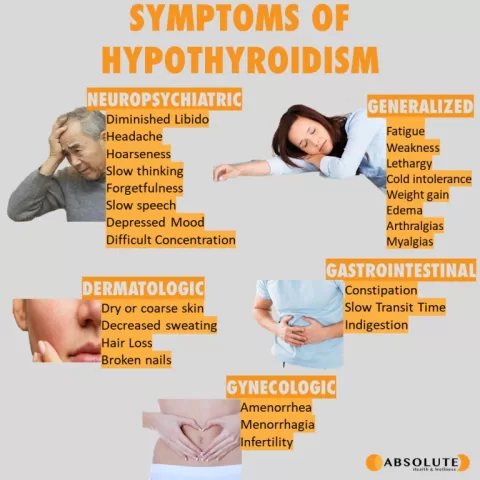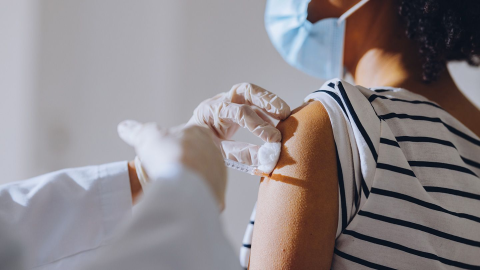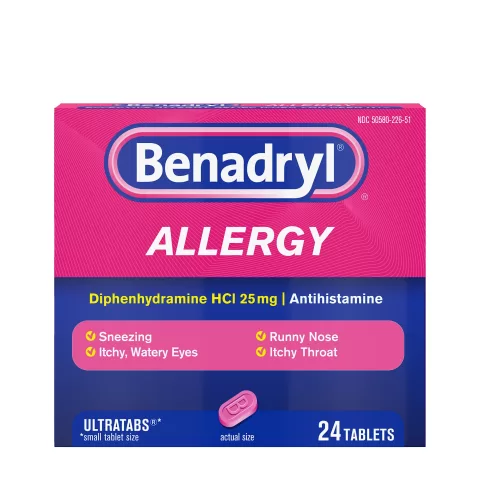The Mobile Stroke Treatment Unit (MSTU) is revolutionizing stroke care by providing critical, life-saving treatment directly to patients in their community. Launched just two years ago, this innovative service bridges the gap between immediate emergency stroke care and hospital treatment, significantly reducing the time to administer essential clot-busting medications. By bringing advanced medical technology—including a portable CT scanner and telemedicine capabilities—right to the patient’s doorstep, the MSTU enhances stroke recovery outcomes and minimizes long-term impacts. The benefits of a Mobile Stroke Unit are profound, not only increasing the likelihood of surviving a stroke but also improving the chances of returning home after treatment. With its success, the MSTU demonstrates how timely intervention can make a remarkable difference in the fight against strokes and their devastating consequences.
Often referred to as a Mobile Stroke Unit or stroke ambulance, the Mobile Stroke Treatment Unit serves as a critical lifeline for those experiencing a cerebrovascular incident. This specialized vehicle is equipped to deliver emergency medical interventions, including diagnostic imaging and timely administration of life-saving medications. By transforming the traditional approach to emergency medical services, the MSTU ensures that stroke patients receive immediate care where they need it most. The emphasis on early stroke treatment not only enhances patient outcomes but also fosters greater awareness of stroke symptoms within the community. As advancements in emergency stroke care continue to develop, the role of the Mobile Stroke Treatment Unit remains crucial in mitigating the long-term effects of strokes and promoting swift recovery.
Understanding the Benefits of Mobile Stroke Treatment Units
Mobile Stroke Treatment Units (MSTUs) bring a revolutionary approach to emergency stroke care by delivering critical interventions directly to the patient, often in less than 60 minutes after symptoms are reported. This rapid response is essential, considering that every minute a stroke goes untreated can lead to the loss of nearly 2 million brain cells. With the inclusion of advanced technology such as portable CT scanners and telemedicine connectivity, MSTUs are designed to streamline the initial assessment and treatment process, providing crucial clot-busting medications on-site before the patient even arrives at the hospital.
In addition to improving immediate response times, MSTUs also significantly enhance the overall outcomes of stroke treatment. Studies have shown that patients treated by MSTUs are 30% more likely to return home after discharge and tend to have shorter hospital stays. By administering care directly at the scene, these units not only help improve survival rates but also minimize the risk of long-term disabilities that often accompany strokes, thus paving the way for better stroke recovery results.
The Role of Clot-Busting Medications in Stroke Care
Clot-busting medications, or thrombolytics, play a pivotal role in the management of strokes, particularly in the acute phase. These treatments are most effective when administered within a narrow window following the onset of symptoms. The Mobile Stroke Treatment Unit excels in this area, achieving a 26% administration rate of these life-saving drugs in the field. By doing so, they help restore blood flow to the affected areas of the brain, which can greatly reduce the extent of damage and significantly enhance recovery prospects for the patient.
The timely delivery of clot-busting medications can drastically alter the trajectory of a stroke patient’s recovery process. For instance, many individuals who receive these interventions early are able to return to their daily lives without enduring severe impairments, illustrating the MSTU’s impact on long-term health outcomes. This is particularly crucial given that stroke is a leading cause of serious long-term disability; thus, the role of the MSTU in facilitating early treatment cannot be overstated.
Emergency Stroke Care: Why Timeliness Matters
Timeliness is one of the most critical factors in effective stroke treatment. The golden hour, the first hour following the onset of symptoms, represents a crucial window where interventions can greatly reduce the risk of permanent damage. Emergency stroke care is essential to ensure that patients receive the necessary treatments as quickly as possible. The Mobile Stroke Treatment Unit’s strategies align perfectly with this urgency, delivering immediate care and ensuring patients are stabilized before transport, further mitigating potential damage caused by delays.
Studies reveal that when patients receive treatment within the golden hour, their chances of full recovery increase significantly. Mobile Stroke Units have demonstrated that they can expedite the administrative processes and treatment timelines, often halving the time it takes for patients to receive care compared to traditional EMS services. This prompt care not only saves lives but also contributes to improved stroke recovery outcomes, enhancing the quality of life for many survivors.
Educating the Community on Stroke Awareness
Education plays a vital role in stroke prevention and management. Many people do not recognize the early warning signs of a stroke or understand the importance of seeking immediate medical assistance. The MSTU team actively engages with the community to raise awareness about strokes, emphasizing the F.A.S.T criteria—Face drooping, Arm weakness, Speech difficulties, and Time to call emergency services. By informing the public of these critical signs, the chances of individuals seeking timely care improve drastically.
Community education initiatives also extend to local EMS providers, ensuring a well-informed network that can recognize potential stroke cases swiftly. As a result, more patients are accessing the life-saving care they need sooner rather than later. The success of these educational efforts is evidenced by the increasing number of calls received by the MSTU since its inception, illustrating a growing public understanding of stroke symptoms and the urgency of immediate response.
Improving Patient Outcomes with Innovative Treatment Models
Innovative treatment models like the Mobile Stroke Treatment Unit signify a shift in how emergency medical services handle acute care situations. By integrating advanced medical technology with specialized personnel capable of immediate stroke treatment, the MSTU transforms emergency response into a proactive healthcare initiative. The ability to conduct assessments and initiate treatment at the site of the emergency dramatically decreases the time to intervention, which is critical for effective management of strokes.
This model not only improves clinical efficiency but also positively impacts patient outcomes. With evidence showing that patients managed through MSTUs experience reduced hospital stays and lower rates of death or long-term disability, the importance of these units in emergency stroke care cannot be underestimated. The MSTU’s seamless communication and coordination among healthcare providers allow for a comprehensive approach that consistently leads to better recovery results.
The Impact of the Mobile Stroke Treatment Unit on Regional Healthcare
Since its introduction, the Mobile Stroke Treatment Unit has revolutionized stroke care across 11 counties. By offering advanced care and immediate access to specialized treatments, the MSTU is reshaping the regional healthcare landscape. Its influence extends beyond emergency response into the realms of education, community engagement, and overall awareness about stroke management, serving as a model for other regions looking to enhance their emergency medical services.
Moreover, the MSTU’s commitment to continual improvement means that its protocols and processes are frequently revisited and refined based on patient feedback and outcomes. This ongoing evolution not only boosts the efficacy of the unit’s operations but also fosters a healthier community that is better prepared to respond to stroke emergencies, ultimately supporting improved public health metrics.
Harnessing Telemedicine for Stroke Care
The use of telemedicine in the Mobile Stroke Treatment Unit represents a significant advancement in emergency care, allowing for instant consultations with board-certified vascular neurologists. This capability ensures that patients receive expert advice and treatment decisions promptly, even before they arrive at a healthcare facility. The rapid engagement of specialists through telemedicine can be the difference between a good recovery and a poor prognosis, emphasizing the need for such technological integration in modern healthcare.
Telemedicine not only facilitates enhanced patient monitoring and diagnosis but also helps in the rapid administration of treatments tailored to the specific needs of the patient. By having immediate back-up from neurologists, the MSTU team can make informed decisions about using clot-busting medications or other interventions that can dramatically improve patient outcomes. This collaborative approach to stroke treatment showcases the effectiveness of integrating technology into healthcare to streamline processes and ensure superior patient care.
Public Perception and Acceptance of Mobile Stroke Units
Initially, the introduction of Mobile Stroke Units faced skepticism from both the public and traditional EMS agencies. Many questioned whether they could effectively deliver care as quickly as established hospitals. However, consistent data showing improved outcomes and faster response times have started to change public perception. Success stories from patients who received timely interventions have helped to reinforce the value of these units in emergency care.
Moreover, as the community becomes increasingly aware of the MSTU’s capabilities, acceptance grows. Education initiatives have bridged the gap, fostering trust in the role of Mobile Stroke Treatment Units as essential components of the healthcare system. The ongoing dialogue about the importance of immediate stroke care continues to shape the narrative, promoting a culture that prioritizes quick response in emergency situations.
Future Developments in Mobile Stroke Treatment Units
As the success of the Mobile Stroke Treatment Unit continues to unfold, plans for expansion and innovation are already in the pipeline. With two new units set to launch in Jacksonville and The Villages, the goal is to extend the reach and accessibility of immediate stroke care even further. This proactive approach not only increases service coverage but also enhances community health outcomes by ensuring more individuals can access timely treatment.
Looking ahead, the MSTU program aims to implement new technologies and refine existing protocols to further improve care delivery. By consistently analyzing performance metrics and patient feedback, the team is poised to develop new strategies that enhance service effectiveness. Such dedication to improvement and innovation embodies a comprehensive vision for the future of stroke care, ensuring that advancements benefit not only patients but the healthcare system as a whole.
Frequently Asked Questions
What is a Mobile Stroke Treatment Unit and how does it enhance emergency stroke care?
A Mobile Stroke Treatment Unit (MSTU) is a specialized vehicle designed to deliver immediate stroke treatment on-site, significantly enhancing emergency stroke care. It is equipped with a portable CT scanner, telemedicine technology, and clot-busting medications that allow medical teams to diagnose and begin treating stroke patients even before they reach the hospital.
What are the benefits of using a Mobile Stroke Unit for stroke recovery?
The Mobile Stroke Unit provides numerous benefits for stroke recovery, including expedited access to clot-busting medications, neurological assessments, and reduced hospital stays. By administering treatment within the critical ‘golden hour,’ the MSTU increases the chances of full recovery and lowers the incidence of long-term disabilities.
What role do clot-busting medications play in the Mobile Stroke Treatment Unit?
Clot-busting medications are crucial in the Mobile Stroke Treatment Unit as they can dissolve blood clots causing a stroke, minimizing brain damage. The MSTU has demonstrated the ability to administer these medications on-site, improving patient outcomes and significantly reducing the overall recovery time after a stroke.
How does the Mobile Stroke Treatment Unit improve patient outcomes compared to traditional stroke treatment methods?
The Mobile Stroke Treatment Unit improves patient outcomes by providing immediate, on-location care that significantly shortens the time to treatment. This quick response is essential, as every minute counts when treating a stroke, reducing the risk of severe long-term effects and increasing the chances of complete recovery.
Can the Mobile Stroke Treatment Unit decrease mortality rates associated with strokes?
Yes, the Mobile Stroke Treatment Unit has been shown to reduce mortality rates associated with strokes by 45% since its inception. By enabling faster access to treatment and specialized care, the MSTU helps prevent the severe consequences of stroke, ultimately enhancing survival rates.
How does the Mobile Stroke Unit contribute to community awareness about stroke prevention and treatment?
The Mobile Stroke Unit actively educates the community about stroke symptoms and the importance of rapid treatment. By sharing success stories and engaging with the public, the MSTU fosters greater awareness, encouraging more individuals to seek immediate care when stroke symptoms arise.
What types of health professionals are part of the Mobile Stroke Treatment Unit team?
The Mobile Stroke Treatment Unit team consists of a registered nurse, a CT technologist, a paramedic, and an EMT who work together on-site, along with a board-certified vascular neurologist accessible via telemedicine for expert consultations during emergency care.
How effective is the Mobile Stroke Treatment Unit in treating stroke patients within the golden hour?
The Mobile Stroke Treatment Unit is highly effective, with a reported capability of administering IV clot-busting medications 26% of the time, essentially doubling the rate of treatment within the first hour of symptom onset compared to traditional emergency medical services.
What is the significance of a stroke treatment being administered within the first hour of symptoms?
Administering stroke treatment within the first hour, known as the ‘golden hour,’ is critical because it greatly reduces brain damage and enhances recovery chances. The faster a patient receives care, the less likely they are to suffer severe disabilities or long-term health issues.
What impact has the Mobile Stroke Treatment Unit had since its launch in 2023?
Since its launch in 2023, the Mobile Stroke Treatment Unit has responded to over 1,400 calls, admitted more than 700 patients, and facilitated over 175 critical interventions, showcasing its effectiveness in providing timely stroke treatment and improving overall patient outcomes.
| Key Feature | Details |
|---|---|
| Established | July 2023 |
| Purpose | To expedite the delivery of stroke care and minimize long-term impairments |
| Key Technology | Portable CT scanner, telemedicine equipment, stroke medications |
| Staffing | Registered nurse, CT technologist, paramedic, EMT, and neurologist via telemedicine |
| Expansion | Now serves 11 surrounding counties |
| Patient Outcomes | 30% increase in home discharges, 2-day reduction in hospital stays, 45% reduction in mortality |
| Success Rate | Administers IV clot-busting medications 26% of the time |
| Impact on Recovery | Provides treatment within the ‘golden hour’, significantly increasing recovery chances |
Summary
The Mobile Stroke Treatment Unit is a groundbreaking initiative that has been crucial in providing timely and effective care for stroke victims. Launched in July 2023, this mobile unit brings advanced medical technologies and expert personnel directly to the patient, significantly improving outcomes and enhancing recovery rates. With innovative features such as a portable CT scanner and telemedicine capabilities, the MSTU is able to successfully administer treatments within critical timeframes, ultimately reducing hospital stays and mortality rates. As it continues to expand its reach and provide education within the community, the Mobile Stroke Treatment Unit is paving the way for a brighter future in stroke care.
The content provided on this blog (e.g., symptom descriptions, health tips, or general advice) is for informational purposes only and is not a substitute for professional medical advice, diagnosis, or treatment. Always seek the guidance of your physician or other qualified healthcare provider with any questions you may have regarding a medical condition. Never disregard professional medical advice or delay seeking it because of something you have read on this website. If you believe you may have a medical emergency, call your doctor or emergency services immediately. Reliance on any information provided by this blog is solely at your own risk.








